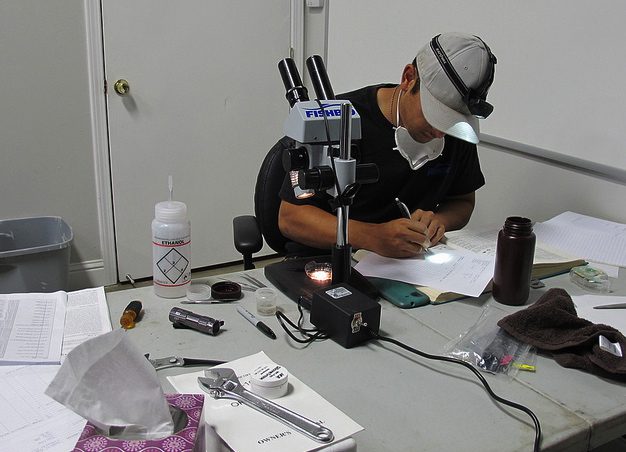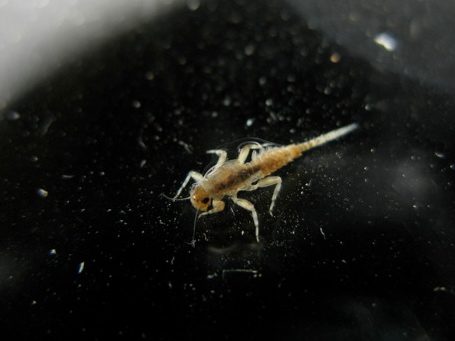Wednesday July 24, 2013

When working to improve the quality of habitat on a river, it is important to understand what constitutes a successful project. It is not always safe to assume that restoring the structure of a habitat will automatically lead to an abundance of fish. A thriving habitat also requires a good source of nutrition for the fish. Most of that caloric energy comes from macroinvertebrates, and understanding how these small critters are adapting to the new habitat is critical (Wallace and Webster, 1996). The success of a restoration project depends on the availability of nutrients at the bottom of the food chain. The role of macroinvertebrates in this chain is consuming algae and other aquatic vegetation, and in turn serving as an important source of food for fish, thereby creating an energetic link. If a habitat lacks a dense macroinvertebrate buffet, hungry salmonoids are going to have a difficult time thriving in the environment.
As part of the post-project monitoring at Honolulu Bar (see Who’s at home?), we have been collecting macroinvertebrates using D-frame kick nets and preserving them in jars of ethanol. Now that the bugs have been collected, it’s time to bring them back to the lab to begin the rigorous task of identifying and quantifying the population. The good news thus far is that our samples contain an abundance of macroinvertebrates, including amphipods (family Gammaridae), caddisflies (family Hydropsychidae), and mayflies (family Heptageniidae – pictured below). Young salmon appear to have plenty of dining options in their newly restored habitat.

